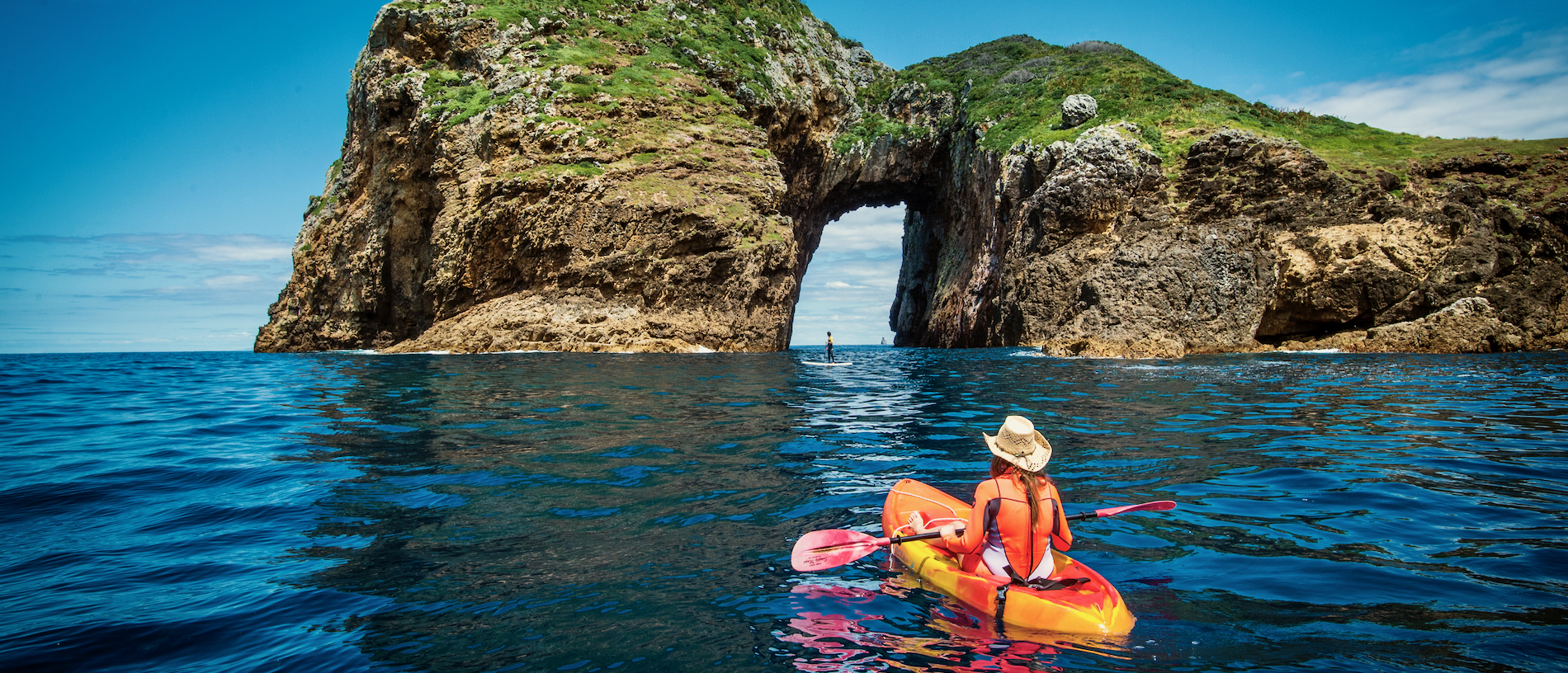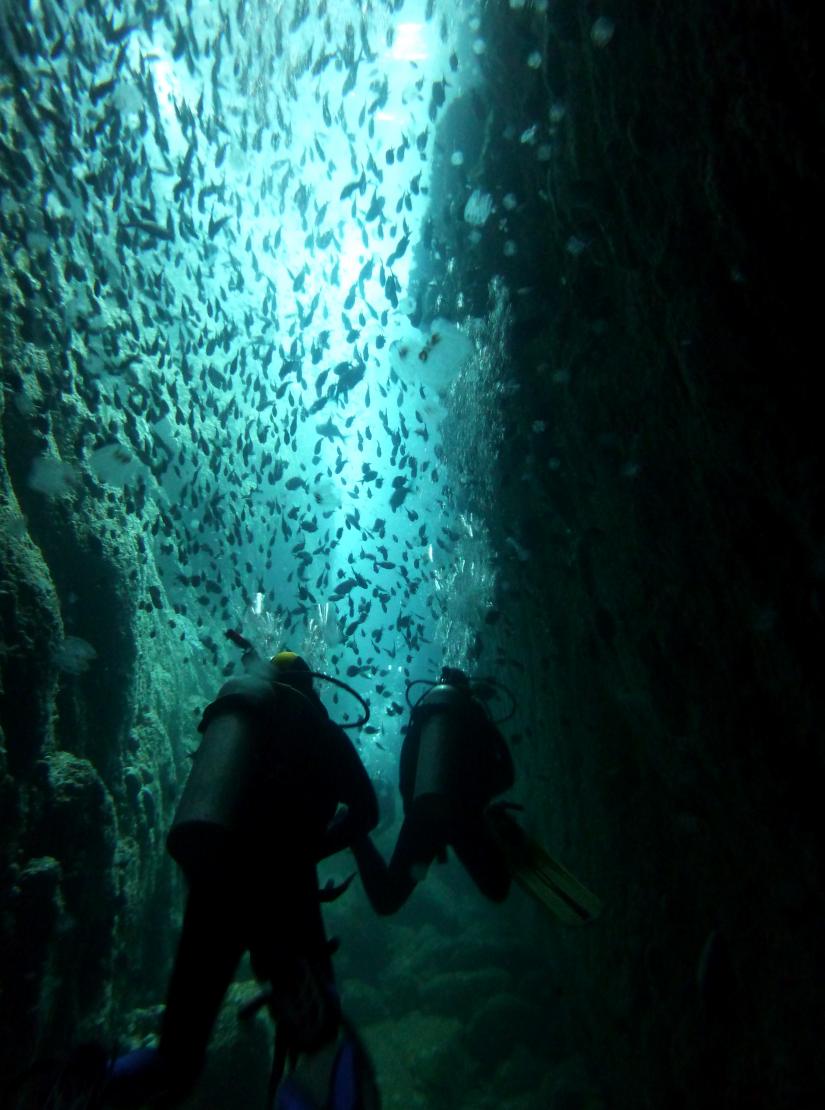
Tutukākā and the Poor Knights: national treasure
One of the best places for those who want to experience the full range of watery pastimes is the east coast of Northland and, in particular, Tutukākā, just to the north-east of Whangārei.

Beneath the waves at the Poor Knights, New Zealand’s second marine reserve, the caves, arches, tunnels and sheer cliffs provide a great variety of habitats to explore by diving or snorkelling. In fact, the diving is so good, Jacques Cousteau rated it as one of the top ten dives in the world!
The Poor Knights Islands are the remains of a group of ancient volcanoes. Beneath the waves these volcanoes have been hollowed and shaped by the ocean into a web of caves, tunnels and cliffs.
The islands were originally occupied by the Ngātiwai ki te Moana people, who occupied the shoreline from Motukōkako (Cape Brett) to Tāwharanui (Cape Rodney) to Aotea (Great Barrier Island), including Aorangi (Poor Knights). The tribe are the kaitiaki of a sacred covenant placed on the islands by the Te Tatua in 1822, following the massacre of his people there while he and his warriors were absent.
Because of their incredible form and biodiversity, the sea surrounding the islands has been a marine reserve since 1981. It extends to 800 metres around the islands.
The Poor Knights offer an extraordinary variety of underwater experiences.
Sponge gardens and gorgonian fields are inhabited by a multitude of fish, shellfish, urchins and anemones, with black coral found in deeper waters. The steep cliffs that fringe the islands plunge up to 100 metres below sea level before reaching a sandy sea floor.
The arches are some of the most interesting places to explore. A rich nutrient soup washes through them, feeding the countless animals competing for space on the walls. Squadrons of stingrays cruise the waters of the archways during warmer months.

Above the water, the islands are home to many rare birds. They are the only nesting place of Buller’s shearwater, which travels there from North America to breed and shares its burrows with tuatara. Around 2.5 million Buller’s shearwaters nest on the main islands every year.
There are plenty of local businesses who specialise in providing a great experience of the reserve – dive trips, sight-seeing, kayaking, snorkelling, cave exploration, surfing lessons, coastal walks and more. Boaties can enjoy the coastline, archways, and clear waters but you are not permitted to land on any part of the islands or rocks.